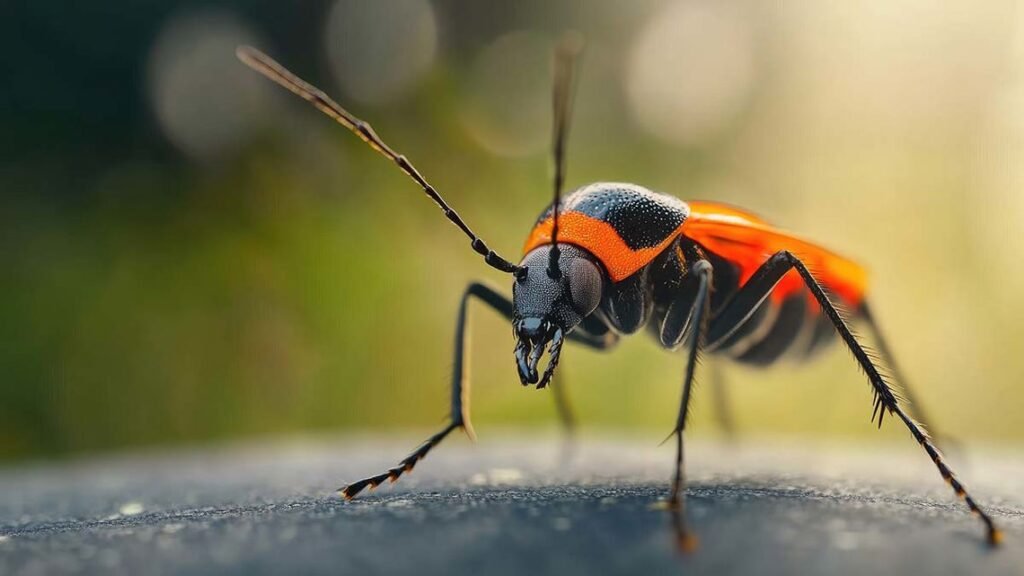UT Health and Texas A&M participated in a CDC study on the bugs that can spread Chagas disease, which is becoming more prevalent here and in other states.
HOUSTON — A new report by the Centers for Disease Control and Prevention is raising awareness that the potentially deadly Chagas disease is becoming more common in the United States.
The disease is spread by blood-sucking insects called triatomines, better known as the “kissing bug” because they typically bite victims near the lips and eyes while they’re sleeping.
According to the CDC, about 8 million people worldwide, including at least 280,000 people in the U.S. have Chagas disease.
Some people don’t realize they have it because the symptoms mimic many other common conditions.
If it isn’t treated, Chagas can cause serious health problems and can even be deadly.
Texas is one of eight states that have reported human cases of Chagas disease.
Both UTHealth and Texas A&M participated in a CDC study of the disease, which is already endemic in 21 countries in Central and South America.
Sarah Hamer, a veterinary epidemiologist at Texas A&M University, is among the researchers saying the time is now to recognize Chagas disease as endemic in the United States, as well.
“This idea that this is only a disease that’s to be encountered in Latin America, it’s not accurate, and it doesn’t reflect the transmission that occurs locally here in the United States to people and to animals,” Hamer said.
Along with Texas, Arizona, Arkansas, California, Louisiana, Mississippi, Missouri and Tennessee have reported human cases of Chagas.
Doctors in most states aren’t required to track or report it.
How is Chagas or kissing bug disease spread?
Chagas disease typically spreads through contact with the feces of kissing bugs. According to the CDC, the bugs will bite and suck blood from infected animals or people. Then they become infected with the parasite. After biting, the bugs poop, and the poop has the parasite in it.
If the poop gets in someone’s body through a cut in the skin, or near the eyes or mouth, it can lead to an infection.
The CDC says people may rub the feces into a cut, their eyes or mouth without even knowing it.
About half of kissing bugs are infected with Chagas, according to Texas A&M.
Where are kissing bugs found?
The blood-sucking insects occur naturally in the southern half of the country and have been reported in 32 U.S. states and Washington D.C., according to the CDC report.
Those states include: Alabama, Arkansas, Arizona, California, Colorado, Delaware, Florida, Illinois, Indiana, Georgia, Hawaii, Kansas, Kentucky, Louisiana, Maryland, Missouri, Mississippi, Nebraska, New Jersey, Nevada, New Mexico, North Carolina, Ohio, Oklahoma, Pennsylvania, South Carolina, Tennessee, Texas, Utah, Virginia, West Virginia, and Washington, D.C.
The bugs can live indoors, in cracks and holes of substandard housing, or in a variety of outdoor settings, including:
- Beneath porches
- Between rocky structures
- Under cement
- In rock, wood, brush piles, or beneath bark
- In rodent nests or animal burrows
- In outdoor dog houses or kennels
- In chicken coops or houses
Symptoms of Chagas or kissing bug disease
Chagas disease has two stages: the acute phase and the chronic phase.
According to the CDC, the acute phase happens in the first weeks or months after getting infected. The chronic phase can last years or even for a lifetime.
Symptoms during the acute phase are usually mild and can include:
- Fever
- Feeling tired
- Body aches
- Headache
- Rash
- Loss of appetite
- Diarrhea
- Vomiting
- Eyelid swelling, known as Romaña’s sign
Most people have no symptoms during the chronic phase; however, the CDC says 20-30% of people infected will develop “serious health problems.” They include:
- Heart issues, such as an enlarged heart, heart failure, altered heart rate or rhythm, or sudden death.
- Digestive problems, such as an enlarged esophagus or colon, can lead to trouble eating or going to the bathroom.
If you are experiencing any symptoms, contact your healthcare provider.
Is kissing bug disease treatable?
Chagas disease can be treated with the use of antiparasitics, according to the Mayo Clinic. Chronic symptoms will have to be managed with other treatment methods.
There is no known cure for Chagas disease.
Kissing bug in dogs
Scientists at Texas A&M University have found Chagas disease in dogs in many counties in Texas.
Some common signs of illness in infected dogs are heart problems, stomach issues, and sometimes sudden death.
Many infected dogs don’t have symptoms, but their daily stress and activity level, along with age, may affect how sick they get.
Researchers are working on new treatments for Chagas disease in dogs.
There is no vaccination that protects against Chagas disease in humans or dogs.
A test for dogs is available through the Texas Veterinary Medical Diagnostic Laboratory.
Types of ‘kissing bugs’ in Texas
There are seven species of kissing bugs in Texas.
- Adult kissing bugs range in size, but are usually about the size of a U.S. quarter.
- Most species have a characteristic band around the sides of the body that is either orange or red.
- The legs of kissing bugs are long and thin; unlike similar insects, the legs are thin throughout the rounded bottom.
- Kissing bugs have noticeable mouthparts that appear as a large black needle attached to the head; when tucked under the body, the needle-like mouthpart is completely straight.
- Kissing bugs are slightly flat and have very long, thin heads.
- Kissing bug nymphs (immature, young insects) are smaller than adults and range from the size of a poppy seed to almost 1 inch long. They have a ‘tear-drop’ body shape, with a pointy head.
